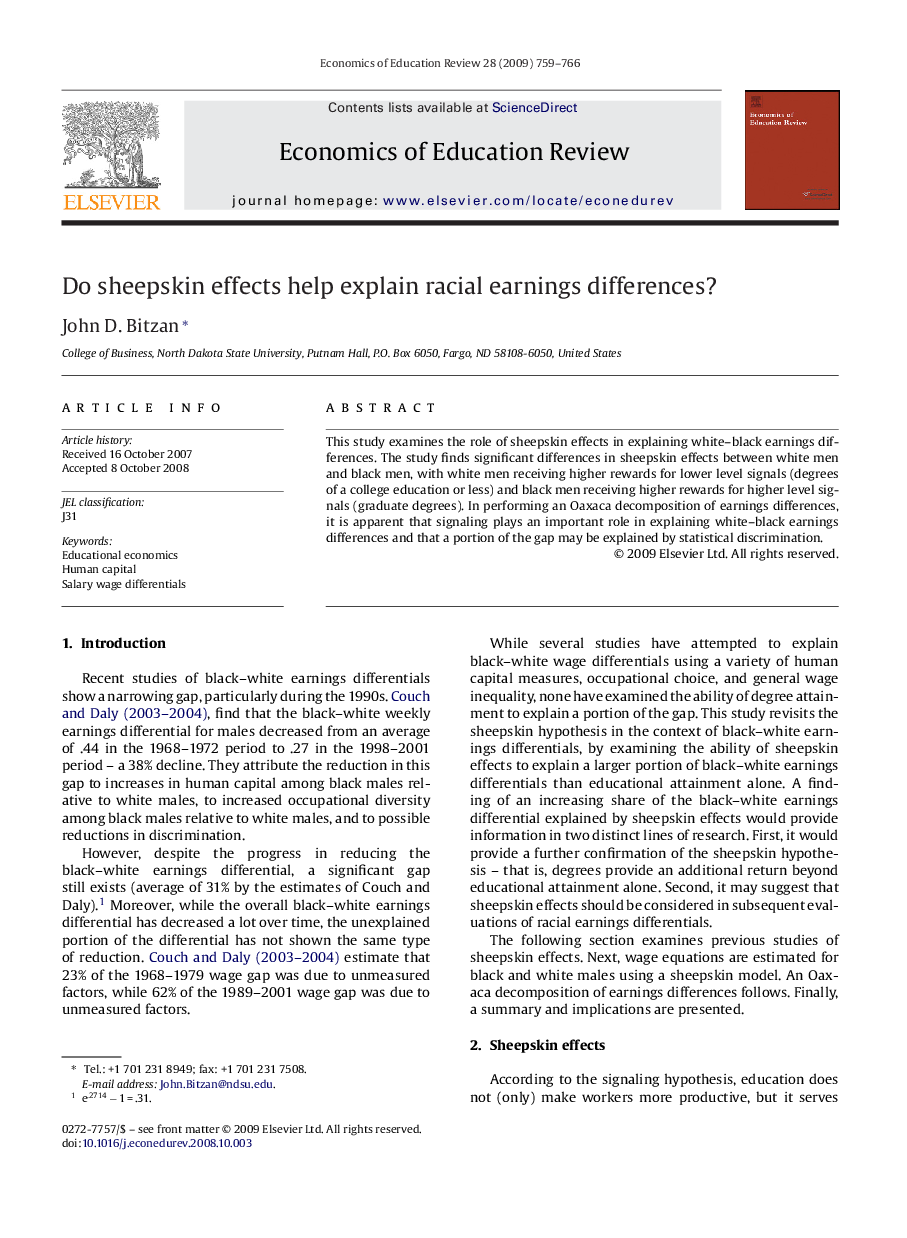| Article ID | Journal | Published Year | Pages | File Type |
|---|---|---|---|---|
| 354874 | Economics of Education Review | 2009 | 8 Pages |
Abstract
This study examines the role of sheepskin effects in explaining white–black earnings differences. The study finds significant differences in sheepskin effects between white men and black men, with white men receiving higher rewards for lower level signals (degrees of a college education or less) and black men receiving higher rewards for higher level signals (graduate degrees). In performing an Oaxaca decomposition of earnings differences, it is apparent that signaling plays an important role in explaining white–black earnings differences and that a portion of the gap may be explained by statistical discrimination.
Related Topics
Social Sciences and Humanities
Economics, Econometrics and Finance
Economics and Econometrics
Authors
John D. Bitzan,
